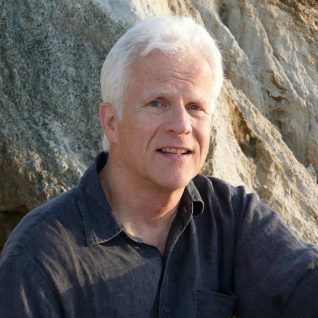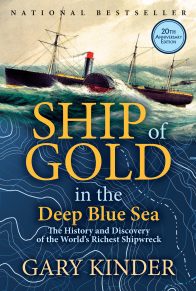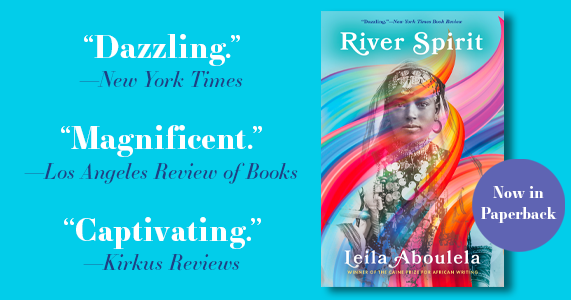An Interview with Gary Kinder
The interviewer is Eric Schoeck, who interviews authors for Imagine Radio on the Internet and for the NPR affiliate on the central coast of California.
ES: You have chosen an interesting way to write this book, folding the 19th and 20th century together by alternating two dramatic stories.
GK: From the time I began researching this I realized that the most difficult challenge I faced was to figure out how to tell this story. For a time I thought I’d tell the story of the sinking in three or four pages and just go on to the modern account of the search and recovery. This has had so many rewrites until it gradually smoothed out and smoothed out to the final pacing back and forth.
ES: I’m curious, too, because this book has been scheduled for printing several times and then postponed. Was it a bit of a monster on the deadlines because of the research involved, or the difficulty of the writing, or the challenge of putting these two stories together?
GK: It was a combination of all of those, and some other factors as well. It was a huge story for me to tackle and try to get my arms around. I have to really understand a story before I can write it. It takes a lot of time just sitting with it. I had to know so many areas of technology and science and oceanography and history and law and then blend all those into a narrative. It was a real difficult challenge. There were also some personal setbacks in my own life to deal with, and I was working, teaching writing skills to lawyers during this time. It wasn’t as if I had ten years of uninterrupted time to work on the book.
ES: And isn’t it interesting that your book finally comes out at the same time as the blockbuster movie Titanic? Do you think this was this fortuitous and helpful?
GK: I’m going to spend the rest of my life explaining how this was accidental timing. When I read about Cameron’s movie last December, and how he fabricated some of the story, blending a modern story about treasure hunting with the story of the sinking, my heart sank. I had worked so hard for ten years, beyond what I thought I was capable of doing. Suddenly Titanic was coming out and I thought it would completely gut everything I had done because it seemed to be the same story. Except I found most of Cameron’s story was made up and mine was historically accurate and really did happen. And my story isn’t really about treasure hunting at its core. The stories really aren’t the same at all, except that they are both about ships sinking.
ES: Let’s talk about the sinking of the Central America in 1857. This was the Titanic of its time, the worst maritime disaster in American history, and a huge media event.
GK: It was, in part because it happened just as the telegraph was completed into the Midwest. So when the survivors came ashore the story hit across the country, with hundreds of newspapers and thousands of articles written about this. And it went on for weeks and weeks. It was the first big nationwide media event in our history, and it remains the worst American maritime disaster. At least 428 people and 21 tons of California gold from the gold rush were lost.
ES: This was a very sturdy ship, but she seems to have run into a storm of the century.
GK: One of the worst nightmares anyone has is being at sea at night in a hurricane. We don’t know how severe that hurricane was, but I estimate seas of 30-40 feet, and winds around 90 miles an hour. It easily could have been 70 foot waves and winds around 120 miles an hour.
ES: You paint a vivid, and wrenching portrait of the sinking, and the desperate struggle for survival of dozens of the men who didn’t drown.
GK: That was a key part of the landscape and real live human drama. Most of these men were beyond exhaustion, having worked for 30 straight hours to try to save the ship. Then they were thrown into the ocean, often alone. There was little or no communication. Several of these men floated up to nine days before rescue.
ES: This part of the book has an almost novelistic feel to it.
GK: Well, there were 49 men saved from the ocean, and they all recounted their stories. They were crucial.
ES: You portray the ship’s captain as a heroic and courageous man.
GK: William Herndon was a skilled captain, and famous as the first white man to explore the Amazon. He took an oath as a Navy captain to stay with his ship if it ever went down. In fact historically, this often didn’t happen, and captains and crew would abandon ship and leave passengers behind. Handgun was able to hold more than 500 men off of the lifeboats and spend 30 hours trying to bail out the ship without any weapons. I still don’t know how he did that. And when the ship sank he went down with it.
ES: In one of the many diversions of this book which help make it a fascinating read, you tell the story of how a young man named Samuel Clemens was inspired by Herndon’s book on exploring the Amazon and sailed down the Mississippi in hopes of going to Brazil.
GK: Herndon’s journal from his Amazon exploration was so intriguing that it was published and became a bestseller. And yes, young Sam Clemens was so excited by this book he wrote his brother and said he was going to the Amazon. When he got to New Orleans, however, he could find no boat to Brazil. But he had sailed the Mississippi, and heard the boatmen call out “mark twain”, and the rest was history.
ES: Let’s fast forward to the 1980’s and pick up the story about the remarkable team which assembled to find the Central America. This was a quest not just for gold, was it, but one of scientific and technological discovery unparalleled outside of the government?
GK: Actually, even the government couldn’t do this. Tommy Thompson, the leader of the recovery team, is the most extraordinary person. He wanted to be an inventor since he was a little boy, and the thing that fascinated me about him is that he purposely set about establishing a unique mindset of his own. He would do things to force himself to think differently.
ES: One of the things that impresses so much about Tommy Thompson is that he is someone who loves the questions more than answers. He like to be confronted by problems that not only others couldn’t figure out but that he couldn’t either. You refer to him as seeing the world upside down, or with this provocative sentence: “He wanted to suck the world through his senses, and exhale a vision.”
GK: Well, that’s just bordering on purple prose, but if you know Tommy, that is exactly the way he is. He always went right up to the limit just to feel where that envelope was. On the expedition he had all that machinery at sea in some really rough waters, recovering their six ton robot in ten foot seas. He knew when to stop, and they never had a man injured out there, which is remarkable.
ES: And one of the things which defined him for me is how he persuaded a group of very skeptical venture capitalists to fund this idea he had to go to the bottom of the ocean and find the Central America. You say he could convince you to do it by telling you all the things that could go wrong.
GK: These were self-made millionaires and they were tough. You couldn’t fool these people. Tommy was smart enough to realize that. He sat down with them, one or two at a time, and calmly answered every question, and if he didn’t know the answer he would say so. He would lay out all the problems, but that is how he was so believable.
ES: You know, it is extraordinary that the whole cost of this, including the first highly functioning underwater robot ever created, all the ship and crew costs for several seasons, was $12 million. That was a lot for Thompson to raise, but when you think of what was spent say on the space program, it’s a drop in the bucket.
GK: Definitely. We did some research on going to the moon, and in round figures it took over 400,000 people and over $400 billion. Tommy knew he wasn’t going to have the United States Treasury behind him. He was very frugal: he not only raised all the money, he spent all the money. He wanted to do what no one had ever done before, to build a vehicle that could actually work on the ocean floor. He built a machine that could pick up a coin on the ocean floor and leave the coin next to it alone. It rotates 360 degrees; no one had even conceived of that. And all of it was done with simple materials. He says that what he did was very simple, but you had to go way back to the beginning and take an entirely different path from that of conventional wisdom.
ES: This also was a true precedent-setting case in admiralty law.
GK: One of the fascinating things about this story is that there radical new developments on a lot of fronts. It wasn’t just about technology, or marine biology, where they discovered new life forms. One of the big developments was that the Central America was found 200 miles offshore, and no federal judge in history had ever assumed jurisdiction over such a ship. Typical jurisdiction was three miles out. No one had asked for the rights to salvage a ship that far out because the water was too deep and there was no technology to do it. They had to convince a judge that with technology coming on line salvage was going to go farther and deeper, and that the law had to come out with it. If not there would be chaos at sea, and shootings, which almost happened here. In 1987 two different groups sailed out there and tried to push Tommy’s crew out of the way.
ES: There is quite a drama in your book as this happens, along with the legal injunctions which resulted. In the end almost all of the vast wealth that was found was awarded to Tommy Thompson and his investors, and I was impressed by the words of the appellate court.
GK: Yes, they said what has been accomplished here “has been by any measure extraordinary, and we can say without hesitation that their story is a paradigm of American initiative, ingenuity, and determination.” That goes on for forty pages. I’m a lawyer and I’ve never read a decision which took so much time to so applaud one of the litigants.
ES: As the book closes we’re left with the vision of a tiny intrepid group on a shoestring budget which accomplished an amazing thing. The invented technology, after the very difficult challenge of even finding the ship in the deep blue sea, and then the careful way all the treasure was carefully filmed and inventoried before being brought to the surface. It is a heroic story.
GK: It certainly was. Some might call it nuts because they spent so much time and energy and had so many setbacks. But Tommy Thompson never stopped believing, and carefully working on that belief.
ES: Let’s conclude with one apocryphal moment. The team recovered not only gold bars and coins in the hundreds of millions of dollars, but many artifacts from the Central America as well. Among them was a child’s cup with two maxims from Ben Franklin on it. I loved the symbolism of the quotes in what they say about this story and this crew: “Diligence is the mother of good luck”, and “God gives all things to industry.” Either of those could have been mottoes for this story.
GK: That really did happen, and those were the words.








